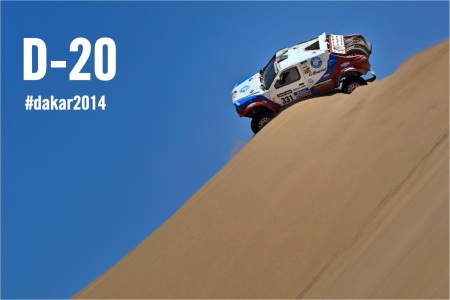DAKAR 2014: The Dakar on TV

“Bringing the dream to those who cannot be there”, as Thierry Sabine said: this is the mission entrusted to the television channels that will broadcast the images of the Dakar to the rest of the world. The images of the Dakar can surprise, shock and move people. As time has passed, they have conquered the channels of 190 countries, which invite their viewers to watch two weeks of travelling and sporting feats. On this scale, the broadcasting of the rally has reached out to the four corners of the earth and moreover is continuing to improve its audience figures, mainly in the countries directly involved in organising the event. As a result, the Pan-American broadcaster Fox Sports, a loyal partner since the race’s African era, has been increasing its coverage and resources with each edition. In addition to its overall coverage, its Brazilian and, starting this year, Chilean branches are each day devoting dedicated programmes to their national representatives. In total, on the Dakar 2014, the teams working for Fox total 17 technicians, consultants and journalists, which is the second biggest contingent after the France Télévisions team of 25 people, for programme times of between four and five hours per day.
A newcomer to the route of the Dakar, Bolivia is also a rookie on the event through its public channel Bolivia TV, which, in addition to its daily programme, will be organising ambitious live broadcasts for the stages that the country will host. Revised and enhanced programmes will also be put in place in Paraguay (Téléfuturo), but also in Canada (Sportsnet, RDS), Poland (TVN), Slovakia (RTVS), Portugal (RTP), Italy (Italia 2) and Bulgaria (BNT).
To satisfy viewers’ appetite for thrills, the production teams work each year on improving the quality and diversity of images broadcast, especially during the 26-minute long daily programme, produced with exceptional resources and in record times. Aerial views, interviews with the major players in the race but also amateurs, as well as historical and technical features are just some of the subjects that each day make up a menu that viewers can savour in front of their screens.
Whilst the Dakar attracts television cameras, the written press, radio stations and agencies also flock to the race in large numbers. Their photographers and reporters travel by plane or in press cars. In total, 400 permanent journalists are granted passes to cover the event.
The TV resources in figures:
3 helicopters and 5 TV cars on the tracks.
13 cameramen positioned along the race’s sites, 11 on-board camera systems, 2 super slow-motion cameras (1,000 images per second), 7 satellite antenna, 21 editing suites.
45 tonnes of equipment.
250 people.
120 hours of programmes, 7.5 hours per day including 1 hour 30 minutes of live broadcast.








